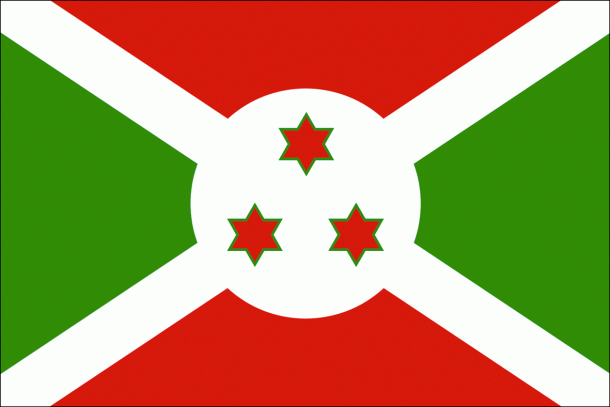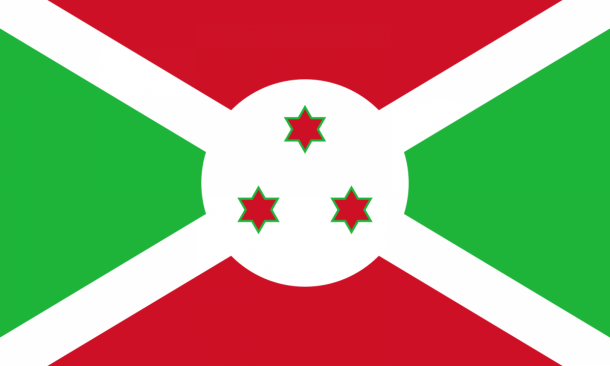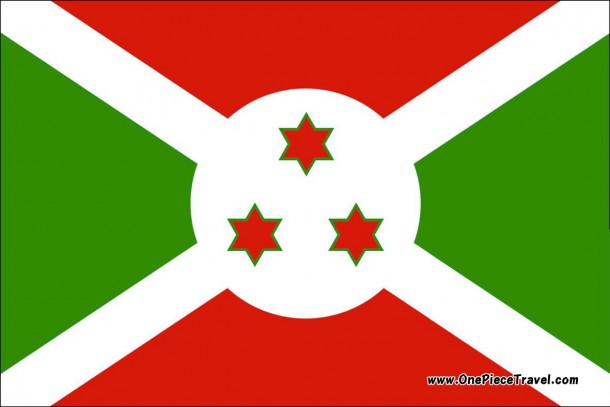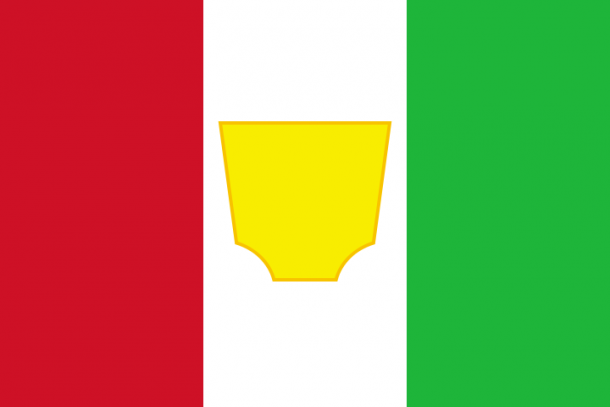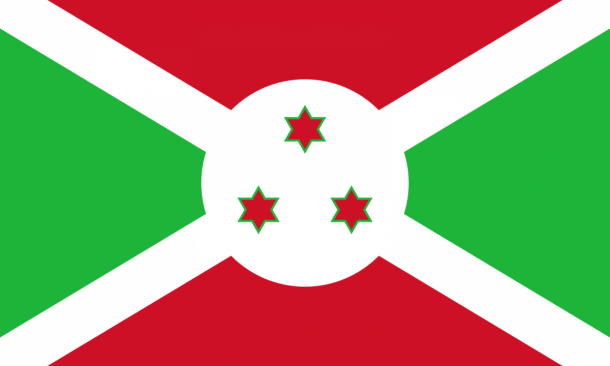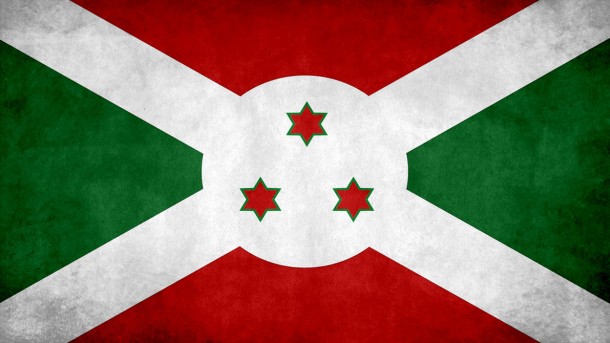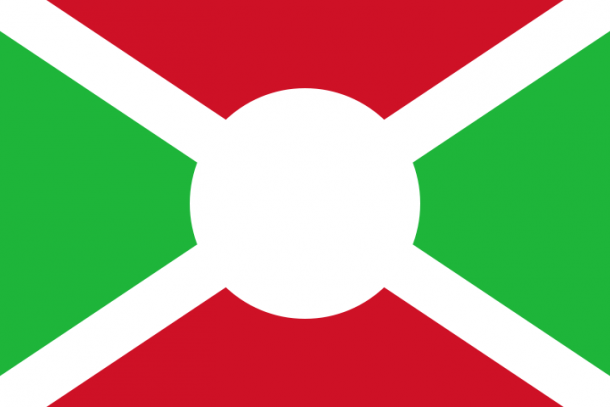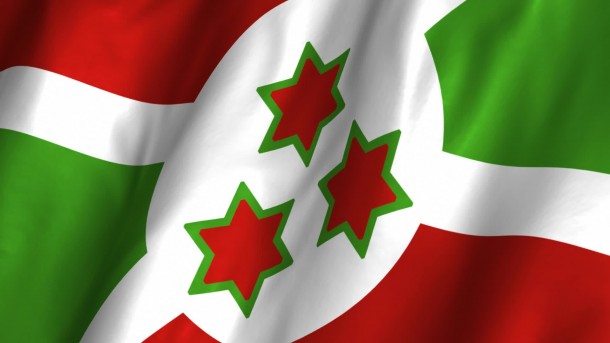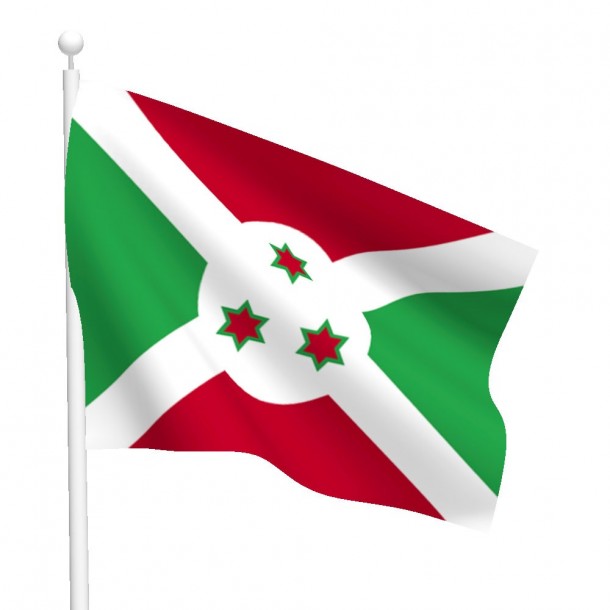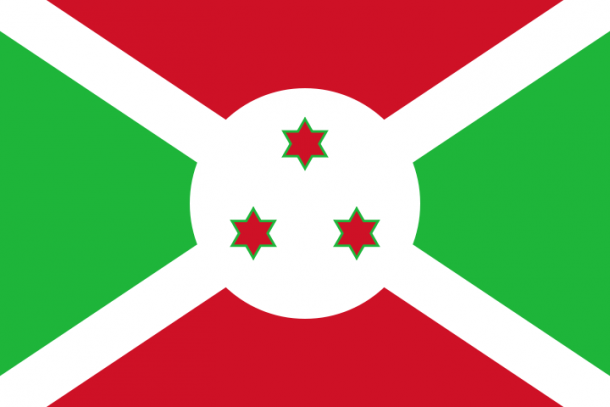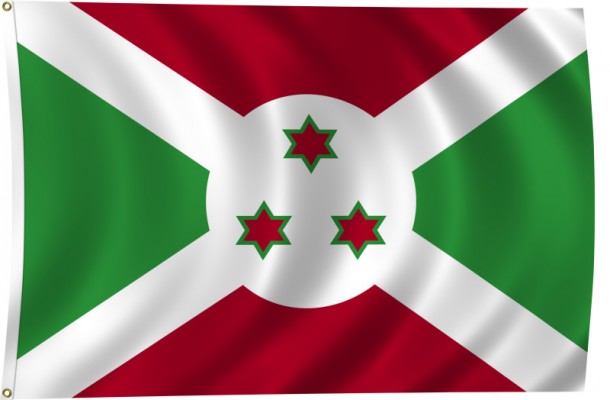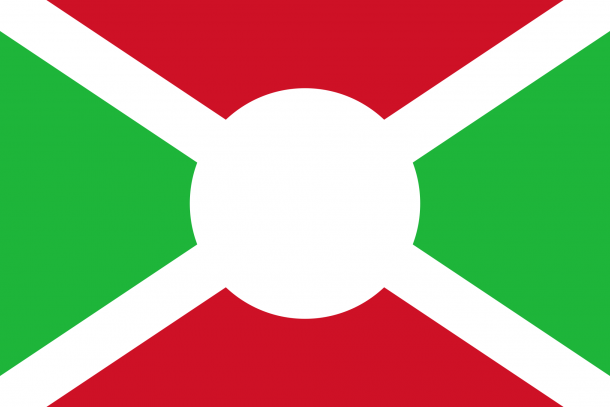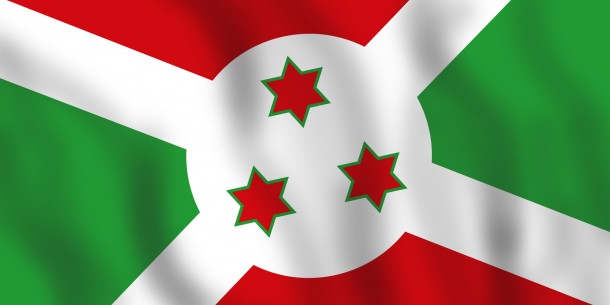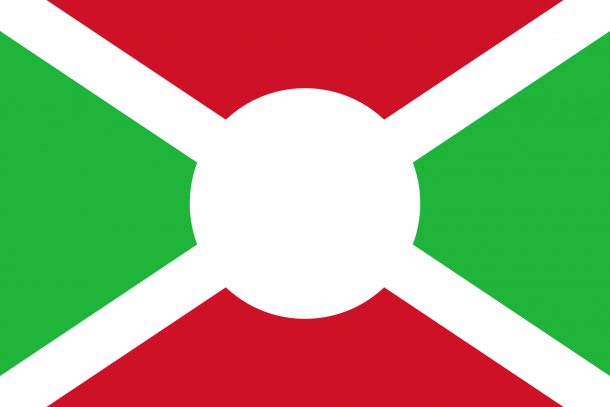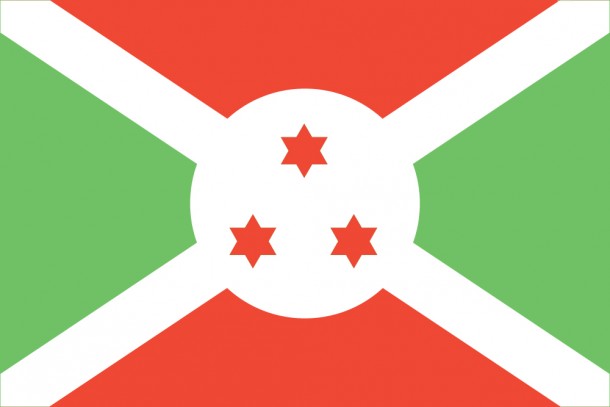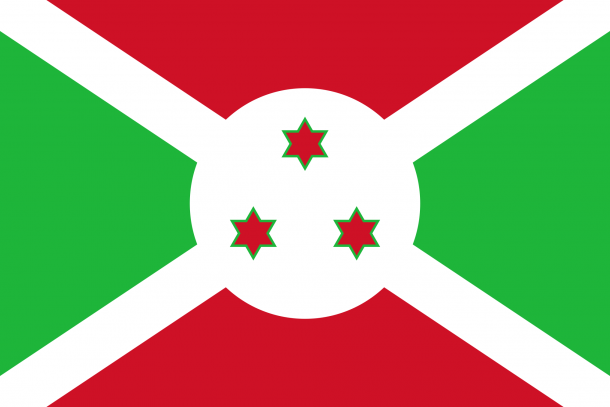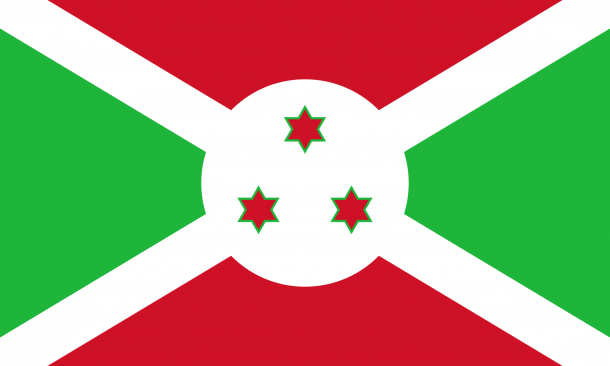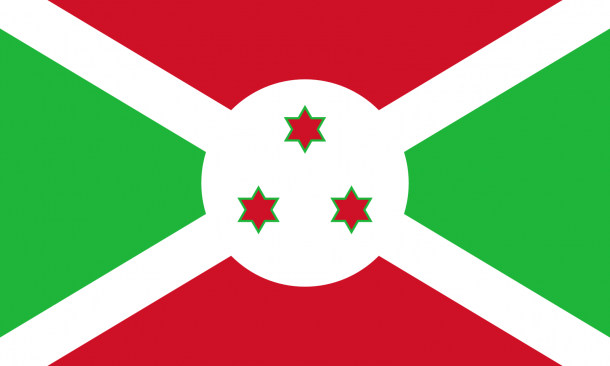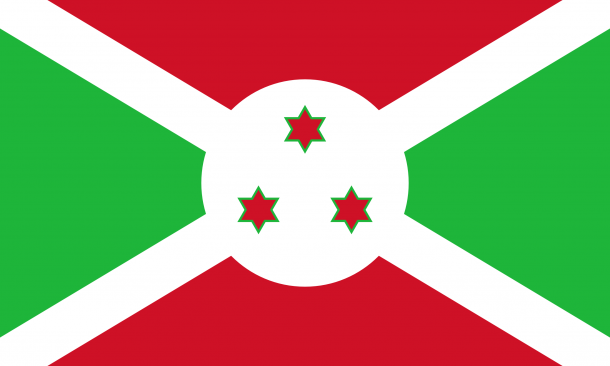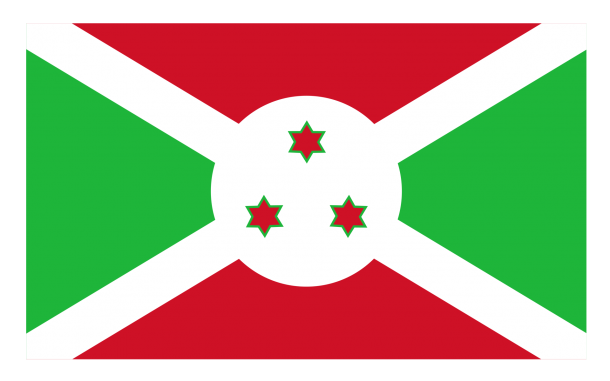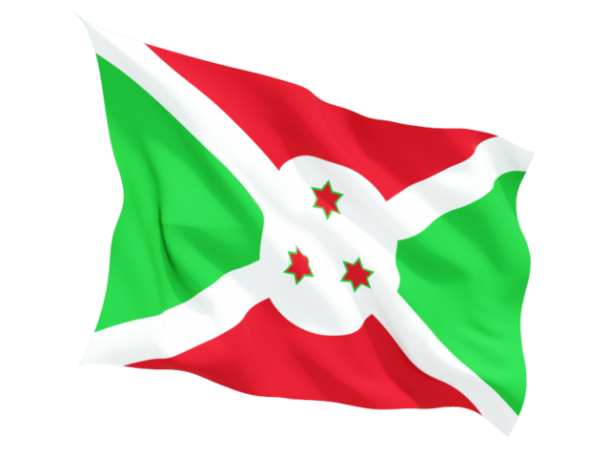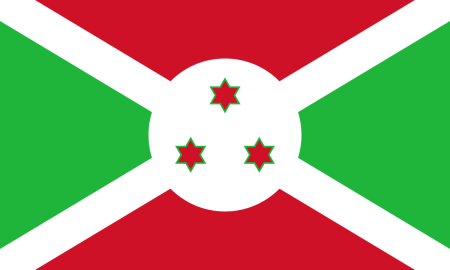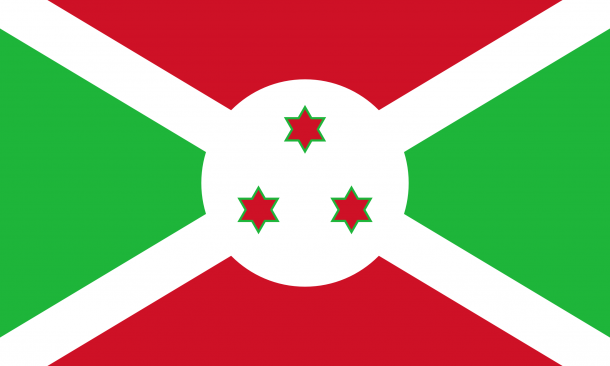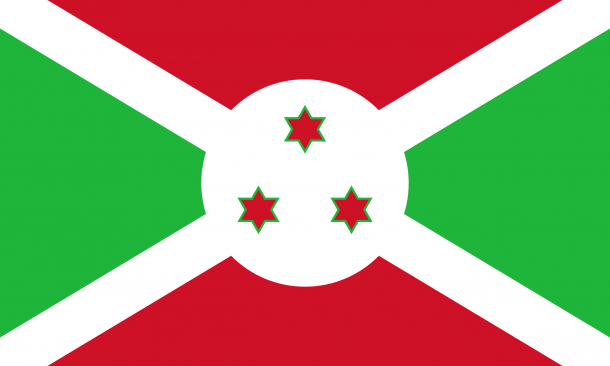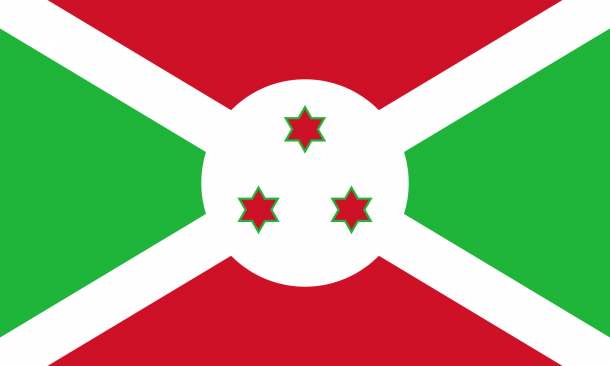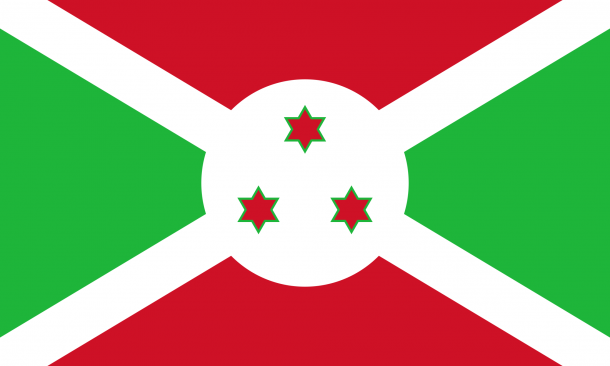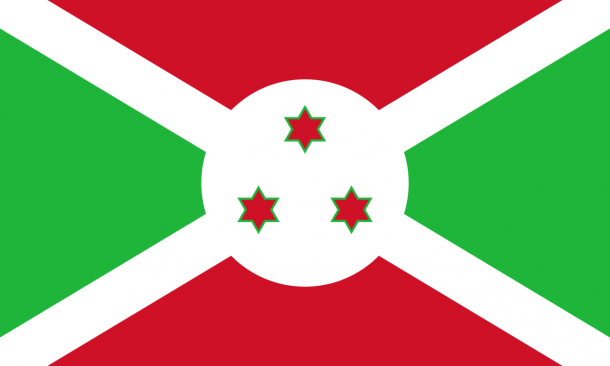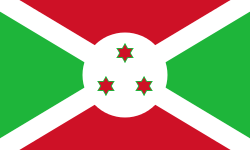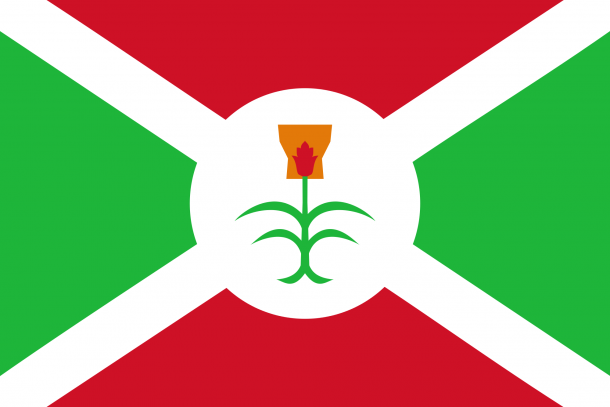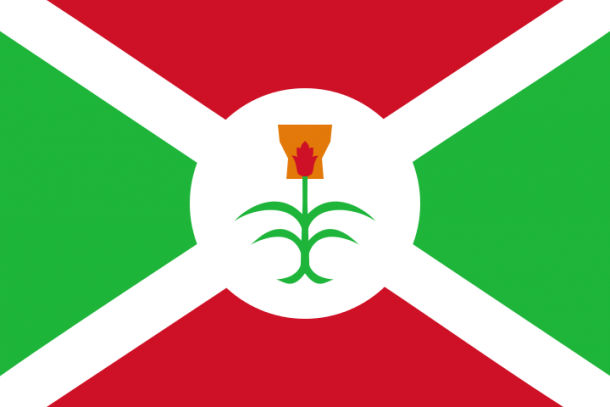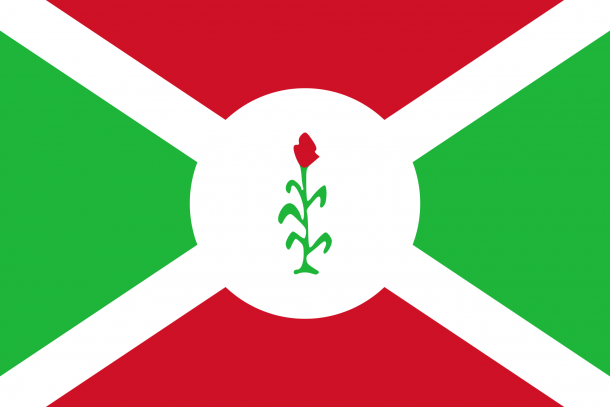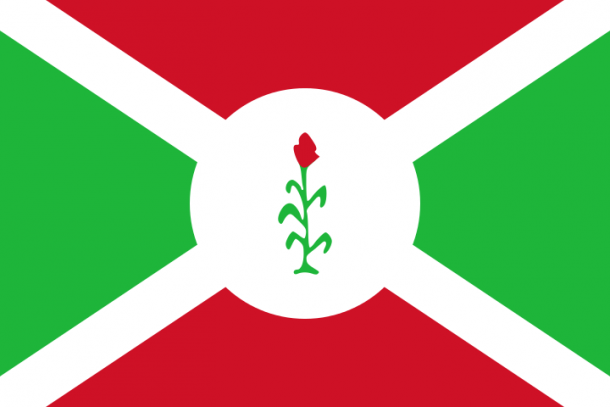The national flag of Burundi was applied on 28th June, 1967 after the country’s independence from The country on July 1, 1962. It includes a color saltire, which separates the area into changing red and green places. The middle of the saltire combines into a color of white disk, on which you will see three red six-pointed stars with the outline of green. The flag ratio was 2:3 until Sept 27, 1982. Not it ration is 3:5 in size. The stars are arranged with one star at the top of an unreal triangular and the two other stars at the two ending points of the disk in the unreal triangular.
The map is separated into four parts in shape of bands by a white cross of each band. The higher and lower parts pf the flag are red while the left and right ones are green. White color of the combination represents serenity, green represents the country’s desires placed on upcoming growth and red represents the struggling of the country during its independence battle. The three stars in pie settings take a place for the three significant cultural categories of Burundi: the Tutsi, the Twa and the Hutu. The three stars also take a place for the three components of the national motto: Travail, Progrès, Unité, (“Work, Progress and Unity,”), which we can see on the coat of hands Burundi. These three stars also signify the commitment that the people of the countries have promised to their king, country and God.
When the monarchy decided over Burundi the flag presented a karyenda. It was considered that the drum’s information could be recognized only by the kings who made it the rules of the state. In November 1966, the karyenda was removed from the flag following the end of the monarchy and a new flag was applied on 28th June, 1967. The karyenda was changed with a sorghum plant, an important farming product of the country.
For travel souvenirs & books, check this out.
For travel souvenirs & books, check this out.


